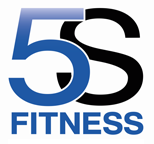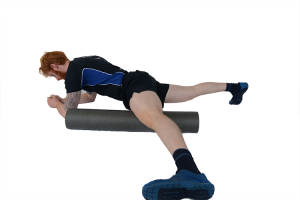Foam rolling is a method of hands-on therapy that you can perform yourself, often referred to as self-myofascial release.
The aim of these techniques is to use pressure to stimulate a sensory receptor called the Golgi tendon organ that tells the muscle fibers to relax.
The Golgi tendon organ (GTO) is a proprioceptive sensory receptor organ that senses changes in muscle tension. It lies at the origins and insertions/tendons of skeletal muscles. Essentially, if muscle tension becomes too great, the GTO will inhibit the muscular contraction to prevent damage to the soft tissues. During foam rolling, we simply capatalize on this mechanism.
Foam rolling can often be a bone of contention, with some specialists agreeing with the practice, while others suggest it is a waste of time. However, I believe any negative views on foam rolling stem from the fact the benefits are often overstated, or in many cases overused.
These techniques are not designed to break down scar tissue and will not stimulate a long-term change in muscle tension by themselves. Instead they will cause a short-term release of muscle tension, which in turn will allow you to gain a more effective stretch to the tissues.
Release techniques and stretching will provide you with short-term relief from excessive tension that might be causing pain or discomfort. The long-term aim is to incorporate these techniques with exercises to strengthen specific muscles and develop good posture and proper function.
Foam rolling is an effective tool, one which I use to good effect each day with various clients. However, you don’t need to spend hours rolling your whole body (this could result in soft tissues becoming stressed). Instead, target specific areas of excessive tension, not only for the purpose of rehab, but also for increased performance. For example, rolling the sole of your foot prior to squatting can help you to free up mobility and achieve a deeper squat, or releasing your hip flexors prior to deadlifting can improve hip extension and ultimately allow you to pull heavier loads.
My first book “Fix Your Posture”, incorporates many release techniques, with full video demonstrations available on the website – stay tuned for the release date of this content.
Thanks for reading
Jay
Follow us on:
Facebook: www.facebook.com/5sfitnessuk
Twitter: www.twitter.com/5sfitness
Instagram: www.instagram.com/5s_fitness
YouTube: www.youtube.com/channel/UC66XVf9NZBO8j-V4or5d2Tg

